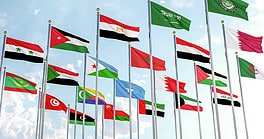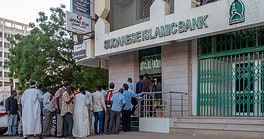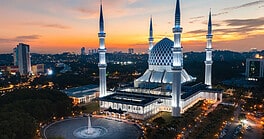INCREASING COMPETITION, CONSOLIDATION FOR ASIA’S BANKS
Developing Asia will grow by 6.2% this year and 6.5% next, according to Asian Development Bank estimates, up slightly from 6.1% in 2013. Despite the uptick in overall growth, banks around the region continue to face challenging landscapes. China, the region’s largest economy, is trying carefully to rebalance its economy toward more sustainable, domestically driven growth, and its success in that endeavor will have significant implications for its banks and for its neighbors. Across the emerging economies of Asia, loan quality will become more transparent as interest rates return to normal levels after years of exceptionally low rates. Some banks will have problems, especially in Vietnam and India, and consolidation is likely to increase in most markets.
In Asia’s more developed countries, intense competition has created some exceptional banks, and they are looking to expand into new markets. Struggling emerging markets banks could make good targets. To be successful, though, these developed markets banks must avoid problems with higher household debt levels and possible asset bubbles in their home markets. Abenomics has spurred growth and a stock market rally in Japan. Maintaining those gains will be challenging, though, and 2014 will be an important test for the region’s second-largest economy. If successful, a revived Japanese economy could compensate somewhat for slower growth in China.
FOR OTHER REGIONAL WINNERS CLICK HERE
REGIONAL WINNER
DBS Bank
DBS is taking its very successful domestic business model and risk management skills beyond its borders to challenge the traditional multinational banking heavyweights. It has built its overseas network of banks organically, focusing on challenging sectors such as small and medium-size enterprise (SME) lending, wealth management and trade and transaction services. Meanwhile, its risk management skills, resulted in a low 1.1% ratio of nonperforming loans (NPLs) overall for the group at the end of 2013. DBS’s investment banking unit has built an outstanding reputation, not only in Singapore but in Hong Kong, where the bank worked on all of the top 10 deals last year.
Piyush Gupta, CEO and director of DBS Group
www.dbs.com
AFGHANISTAN
Afghanistan International Bank
Afghanistan has the third-lowest ranking of the 177 countries on Transparency International’s Corruption Perceptions Index, and a January report by the US government cast serious doubt on the central bank’s ability to govern the nation’s financial institutions. Despite those challenging circumstances, Afghanistan International Bank (AIB) had an outstanding 2013, increasing its income from fee-based and foreign exchange transactions by 35% and its overall revenue by 20%. The bank’s reputation for reliability contributed to a compound annual growth rate in deposits of 55% between 2007 and 2013.
Khalilullah Sediq, CEO
www.aib.af
ARMENIA
Ameriabank
Armenia’s banks had a good 2013. Deposits and pre-tax profits both rose by more than 20% in the first three quarters, according to numbers from accounting firm KPMG. Among those banks, Ameriabank is the largest by assets and deposits. The bank enjoys a diverse customer base and offers some of the most innovative products in the industry. Ameriabank has recently expanded its credit card and electronic payment options, improved flexibility over terms of client deposits and simplified processes for small- and medium-enterprise (SME) lending.
Artak Hanesyan, chairman of the management board and general director
www.ameriabank.am
AUSTRALIA
ANZ Group
Australian banks are doing well, despite slower growth domestically and weaker demand around the region for the country’s raw material exports. All of the big-four banking groups have set profit records in at least one recent quarter. Of the four, ANZ has the most ambitious international strategy, focusing in particular on Asia. The sell-off in emerging markets last year led many to question the wisdom of that strategy. ANZ responded with its fifth straight year of record cash profit in fiscal year 20122013.
Michael Smith, CEO
www.anz.com
AZERBAIJAN
International Bank of Azerbaijan
IBA has never let its size or state-owned status inhibit its innovative approach. The bank is by far Azerbaijan’s largest in terms of assets and loans and has branch offices in several markets across central Asia as well as representative offices around the world. In the past year, IBA has strengthened its Islamic banking services and arranged several private placement transactions. In October, IBA’s shareholders decided to increase the bank’s capital by 500 million Azerbaijan manat ($640 million) over a four-year period.
Jahangir Hajiyev, chairman
www.ibar.az
BANGLADESH
United Commercial Bank
Political instability has dimmed Bangladesh’s economic growth story in the past year, and the country’s banks have suffered. Most experienced slower or negative profit growth in 2013. United Commercial, one of the country’s smaller private banks, managed to buck the trend, in part by improving customer service and expanding its geographical reach through banking kiosks. The bank’s net profit more than tripled in the first three quarters of 2013.
Muhammed Ali, CEO and managing director
www.ucbl.com
BRUNEI DARUSSALAM
Bank Islam Brunei Darussalam
In the past year, BIBD has rebranded itself to highlight its domestic origins and Islamic banking strengths. As part of the process, the bank upgraded its branch offices, expanded customer services and implemented technologies, including new features for its industry-leading mobile banking platform. The bank is already Brunei’s largest financial group and further increased its market share across most measures, including deposits, credit card use, automotive financing and unsecured consumer lending, through the first three quarters of last year.
Javed Ahmad, managing director
www.bibd.com.bn
CAMBODIA
Acleda Bank
Cambodia’s Acleda Bank has grown from a small organization focused on SME lending into one of the country’s largest banks, with 238 outlets domestically and multiple branches in Laos and Myanmar. The bank has grown quickly and consistently in recent years, with profits and overall lending up by 24% and 17%, respectively, in 2013. The bank has benefited from the support of such experienced foreign stakeholders as the International Finance Corporation, while remaining majority owned by domestic investors, including its own employees.
In Channy, president and CEO
www.acledabank.com.kh
CHINA
China Merchants Bank
China Merchants Bank has always been more market-oriented than its larger, centrally owned counterparts. The bank has built on its strong credit quality controls, excellent customer service and innovative credit card and fee-based products to become China’s sixth-largest commercial bank. Among China’s ten largest banks, CMB boasts the highest net-interest margin and second-highest return on average assets and return on equity. Meanwhile, its NPL ratio is among the lowest in the industry at 0.8%.
Huiyu Tian, executive director and president
www.cmbchina.com
GEORGIA
TBC Bank
The bank boasts three times as many Internet banking customers as its closest competitor and introduced the country’s first mobile banking applications. It has the largest domestic market share in retail deposits and ranks second in total lending. The bank recently added new mortgage, agricultural and consumer goods lending products. Net profits for 2013 grew by 27%, and assets and lending expanded by 14% and 17%, respectively. The bank also boosted its capital base through a series of deals, including a $35 billion syndicated loan.
Vakhtang Butskhrikidze, CEO
www.tbcbank.ge
HONG KONG
HSBC
HSBC is Hong Kong’s biggest bank, and Hong Kong is HSBC’s most profitable market. The year 2013 was a good one for the city and the bank. Hong Kong’s GDP growth rate almost doubled, to 2.9%, and pre-tax profit at HSBC’s Hong Kong division rose 13%, excluding effects from asset sales. HSBC leads the market in Hong Kong dollar bond issuance and ranks among the top five banks in equity and M&A tables.
Stuart Gulliver, group chief executive
www.hsbc.com.hk
INDIA
HDFC Bank
Although India’s banking sector overall is struggling, the country’s private banks have continued to perform relatively well. Among those private banks, none has performed as strongly and consistently as HDFC Bank. Through the nine months ending in December, the bank’s profits grew by 27%. “HDFC’s ratings factor in its consistently superior performance to peers’ in terms of various credit metrics, including asset quality and funding,” reads a report from India Ratings and Research, a Fitch Group company. “The ratings also consider the bank’s robust profitability and above-average capital levels, which are strong enough to absorb significant impact during times of stress.”
Aditya Puri, managing director
www.hdfcbank.com
INDONESIA
Bank Central Asia
BCA expanded its lending portfolio across all segments last year, while maintaining asset quality and widening net interest margins. The resulting increase in interest income boosted the bank’s bottom line by 21.6%. Mortgage lending and automotive financing in particular saw big gains, up by 26.7% and 28.7%, respectively. Despite the significant growth in lending, NPLs accounted for only 0.4% of total lending, while capital adequacy ratios continued to rise.
Jahja Setiaatmadja, president and director
www.bca.co.id
JAPAN
Mitsubishi UFJ Financial
Japan’s deflation-fighting economic policies resulted in a stock market rally last year, and the country’s three mega-banking groups are likely to post record profits for the Japanese fiscal year, which ended in March. Through the nine months ending in December, Mitsubishi UFJ outpaced its rivals in total profit and year-on-year profit growth. The bank’s securities division saw its income for the three quarters rise to its highest level since its formation in 2005. Mitsubishi UFJ also expanded its international presence through investments in Southeast Asian banks and a US-based commercial real estate financing firm.
Nobuyuki Hirano, president and CEO
www.mufg.jp
KAZAKHSTAN
Halyk Bank
Halyk Bank is Kazakhstan’s most profitable bank and second-largest, by assets. Last year it increased income from transactional banking by 19.1% and income from consumer loans by 32.6%, both of which contributed to a 3.5% uptick in net profit. In February the bank announced its acquisition of HSBC’s Kazakhstan’s subsidiary, a move that will expand its domestic network, boost its international business and improve risk management structures. Those strengths could prove valuable this year as currency fluctuations and an aggressive Russian foreign policy cast shadows over the business environment.
Umut Shayakhmetova, executive director and CEO
www.halykbank.kz
KYRGYZSTAN
Demir Kyrgyz International Bank
Demir Kyrgyz International Bank has grown rapidly in recent years to become the country’s second-largest bank by deposits and third-largest by total assets. In 2013 net profit rose by 16.6% and its lending portfolio expanded by 28%, including a 49% jump in retail loans. In coming months the bank plans to further strengthen its SME lending services by providing training sessions, highlighting trade finance products in particular. The bank also boasts a 33% market share in the International Visa card business and a 68% market share by number of point-of-sale terminals servicing international cards.
L. Sevki Sarilar, chairman and general manager
www.demirbank.kg
MACAU
ICBC Macau
Diversity is at the heart of ICBC Macau’s success. The bank serves as a bridge between mainland Chinese companies and Portuguese-speaking countries around the world while leading the market in precious metals investments and e-banking services. Domestically, the bank offers extensive SME services and has a strong mortgage lending unit. ICBC Macau has also put together syndicated loans for local entertainment companies and launched the first renminbi-only pension fund, allowing investors to increase returns through interest and renminbi appreciation.
Jiang Yisheng, CEO
www.icbc.com.mo
MALAYSIA
Public Bank (Malaysia)
Public Bank (Malaysia) is growing steadily year by year, focusing on traditional banking business, asset quality and gradual overseas expansion. The bank increased its profits by 5.2% to a record-high 5.3 billion ringgit ($1.6 billion) in 2013 while keeping an industry-low 0.7% NPL ratio. Public Bank has the highest market share in commercial property financing, residential property financing and automotive financing and runs efficiently, ranking lowest among peers in cost/income ratio and highest in productivity per employee. Public Mutual, the bank’s wholly owned fund management company, had record-high profits last year and kept its leading 41.2% market share.
Tan Sri Dato’ Sri Dr Teh Hong Piow, chairman
www.pbebank.com
MONGOLIA
XacBank
In recent years Mongolia has capitalized on its natural resources to boost economic growth, with GDP rising by an estimated 12.5%, in 2013. This rapid growth has benefited the country’s banks but also raised concerns over asset quality. Initially founded as a microfinance bank, Xacbank has maintained excellent asset quality while benefiting from the country’s economic boom. Last year the bank’s profits rose by an estimated 35%, and its NPL ratio stood at an industry-leading 1.4%.
Bat-Ochir Dugersuren, CEO
www.xacbank.mn
MYANMAR
Co-operative Bank
Few Asian countries are generating as much excitement for investors as Myanmar. The reform process has firmly taken root, and domestic and foreign companies are taking advantage of the opportunities that process presents. CB Bank is one of the pioneers of the banking industry, expanding its domestic network while forging partnerships with experienced international partners. This year the bank has launched its mobile banking application, expanded its foreign exchange and ATM networks and opened five new branches. Last year it partnered with MasterCard to offer the country’s first pre-paid travel cards.
Kyaw Lynn, CEO and executive vice chairman
www.cbbank.com.mm
NEPAL
Standard Chartered Bank Nepal
After a decade of political turmoil, Nepal is still struggling. In fiscal 2013, which ended last July, its currency depreciated, its trade balance deteriorated, and its prices rose by around 10%. Against that backdrop, Standard Chartered Nepal turned in another outstanding performance, further bolstering its reputation as the country’s most stable bank. In fiscal year 2013, operating profits grew by 9.9% and its NPL ratio stayed below 0.8%. The bank boasts the largest portfolio of retail mortgages, leads the market in automotive and personal loans and assists in over 70% of cross-border transactions industrywide.
Joseph Silvanus, CEO and director
www.sc.com/np
NEW ZEALAND
ANZ New Zealand
Loan growth and declining costs enabled New Zealand’s four largest banks to post big gains in fiscal year 2013. ANZ New Zealand claimed the lion’s share, almost twice the amount of its nearest competitor. The bank has maintained the momentum, with cash profit up 32% for the quarter ending in December. Domestically, ANZ accounts for 30% of all home loans and 39% of rural banking service. Its international business got a big boost when China’s central bank chose ANZ New Zealand to be the market maker for the direct trading of New Zealand dollars and Chinese renminbi on China’s foreign currency exchange.
David Hisco, CEO
www.anz.co.nz
PAKISTAN
United Bank Limited
Intense competition within Pakistan’s banking industry is pushing down interest spreads and slowing growth in Pakistan’s banking industry. Despite those challenges, UBL increased its net profit by 4% in 2013 and improved its asset quality, evidenced by an 8% drop in NPLs. The bank launched the country’s first Internet banking platform and further improved customer service with a new call center and expanded ATM network. UBL leads the market in international remittances and opened a branchless, agent-based UK subsidiary in March to facilitate international money transfers.
Atif Bokhari, president and CEO
www.ubldirect.com
PHILIPPINES
BDO Unibank
BDO Unibank shows no signs of relinquishing its title as the country’s largest bank. It leads the market in terms of assets, deposits and loans, with each of those growing by 34%, 45% and 23%, respectively, in 2013. The bank has made some high-profile acquisitions recently, buying up Citibank’s local savings subsidiary and Deutsche Bank’s domestic trust business. BDO also announced a partnership earlier this year with Joyo Bank to assist Japanese SMEs in the Philippines and another partnership with Kookmin and Hana banks to assist Koreans living in the Philippines with international remittances.
Nestor Tan, president and director
www.bdo.com.ph
SINGAPORE
DBS Bank
Singapore is home to some of the world’s best-performing banks. Of those banks, DBS has shown the most willingness to innovate and adapt, implementing technology to expand product lines and improve service. As examples, the bank recently introduced Home Connect, a real-estate-valuation mobile app, and utilized customer data to reduce wait times. The bank boasts the largest branch network in Singapore and has set up additional mini-branches in high-traffic locations. Through that network, DBS leads the domestic industry in mortgages, auto loans, consumer loans and debit and credit cards.
Piyush Gupta, CEO and director of DBS Group
www.dbs.com.sg
SOUTH KOREA
Shinhan Bank
Intense competition and low interest rates cut into Korean banks’ profits last year, with all of the major banking groups seeing big drops in their bottom lines. Shinhan Bank was no exception, but its profit ranked highest in the industry, despite having fewer assets than some of its rivals. The bank increased its total assets slightly while reducing its nonperforming loan ratio. Growth for Shinhan and its counterparts should pick up this year as interest rates rise, but charges of corruption at home and abroad could weigh on their reputations.
Dong Woo Han, CEO and chairman
www.shinhangroup.com
SRI LANKA
Commercial Bank of Ceylon
CBC boasts the largest branch network, highest market capitalization and best capital adequacy ratios among private banks in Sri Lanka. The largest lender to the country’s SMEs, it recently added new home and automotive lending products as well as security enhancements for its credit card and point-of-sale operations. Its highly regarded customer service got additional support from last year’s 26% boost in the training budget. On the technological front, the bank revamped its online banking services to reduce costs while implementing an innovative market-price tracking system to reduce risks from gold-price fluctuations.
Ravi Dias, CEO and managing director
www.combank.lk
TAIWAN
CTBC Bank
Weak economic growth and intense industry competition have narrowed interest margins and dampened profit growth for Taiwan’s many quality banks. In response, CTBC has diversified its income streams by focusing on SME lending and fee-based services while expanding into new markets. The strategy is paying off. The bank achieved record profits last year, while leading the industry across several measures, including credit card balances, cards in circulation, bancassurance sales, treasury and derivative services and Internet and mobile banking. CTBC also agreed to buy Japan’s Tokyo Star Bank. The deal, if approved, will extend the bank’s overseas network to more than 100 branches in
12 countries.
James Chen, president and CEO
www.chinatrust.com.tw
THAILAND
Siam Commercial Bank
Siam Commercial Bank racked up its fourth consecutive year of record-setting performance in 2013, with net profit rising 28% and market share growing in terms of assets, loans and deposits. SCB leads its peers in market capitalization, retail network size and mortgage lending portfolio. The bank is expanding its SME services and fee-based product lines, with income from the two segments up by 17% and 24%, respectively, in 2013. Corporate finance fees rose by 91%, and brokerage fees jumped
by 123%.
Kannikar Chalitaporn, president
www.scb.co.th
UZBEKISTAN
Asia Alliance Bank
AAB has grown very rapidly in recent years and shows no signs of slowing down. In 2013 assets rose by 58% and profit soared by 150%, according to numbers reported to credit rating agency Moody’s. While AAB’s rapid growth could hide problematic loans, the NPL ratio thus far remains under 4%. The bank derives much of its income from fee-based services, money transfers in particular, and has forged relationships with several foreign banks, including Zurich-based UBS and Beijing-based Bank of China.
Abdukahorov Abduhalikovich, chairman
www.aab.uz
VIETNAM
Sacombank
Vietnam’s banking industry is struggling with weak profitability and poor asset quality. Against that backdrop, Saigon Thuong Tin Commercial Joint Stock Bank, better known as Sacombank, has outperformed its rivals by focusing on retail customers in addition to large corporate clients. The bank also derives much of its income from fee-based services and long-term investments. As a result, net profit more than doubled last year to 2.2 trillion Vietnamese dong ($104 million). In March, Sacombank announced its merger with a smaller local counterpart, Southern Bank.
Phan Huy Khang, CEO
www.sacombank.com.vn
Awards By Region:
North America
Western Europe
Central & Eastern Europe
Latin America
Middle East
Africa
Best U.S. Regional Banks



